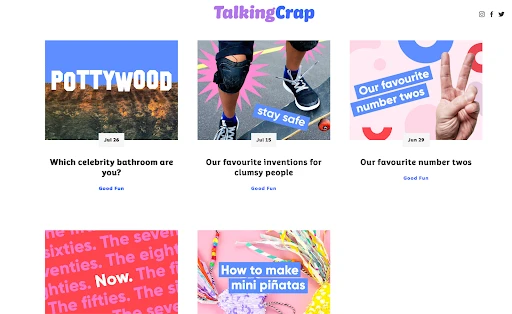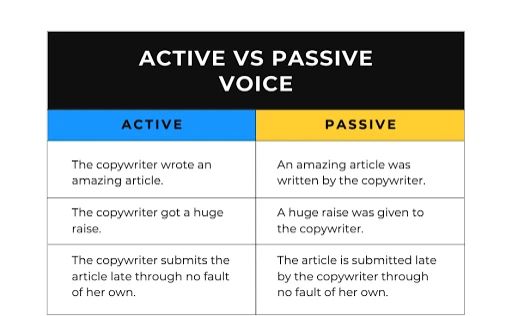12 Copywriting Techniques for Digital Marketers
Published by Incomedia in Web design · Friday 03 Nov 2023
If you’re in the business of digital marketing, then you know how important stellar copywriting is. Your words are the bridge between a company and its audience. Can you give the reader what they want? Have your words sparked their curiosity?
1. Understand your target audience
2. Consider the structure





The answer could determine whether or not they interact with or make a purchase from the brand you’re marketing.
But in today’s sea of content, competing for your audience’s attention is incredibly challenging, even for the most experienced digital marketer. So if your copy isn’t quite delivering the results you’d hoped for or you just want to hone your craft, you’ve come to the right place.
This article will explore 12 copywriting techniques to make your digital content stand out. Whether you’re writing a 30-word social media post or 1,000-word article, here’s how to make your copy sparkle.
1. Understand your target audience
Understanding basics about your target audience is crucial for nailing the tone and content of your copy. You want to ensure the copy is accessible and relatable to readers. After all, you wouldn’t write an ad about a business risk assessment matrix for people who don’t know how to work a remote control (no judgment, auntie!). If you did, the content would need to be significantly different to an ad targeting professional auditors and business owners.
Learning about your audience involves understanding their:
- Existing level of knowledge
- Search motivation
- Pain points and problems they need to solve
Once you have this information, keep it in mind as you craft your copy. Remember, a light listicle is appropriate in some ads and articles, while in others, a more in-depth and academic-sounding piece is more appropriate.
2. Consider the structure
With people reading less now than in the past, the structure and length of your content is crucial. Long-form web content, in particular, must be easy to read and scan, while social media content structure will vary by platform.

Image sourced from healthyhappyimpactful.com
So before you start fleshing out copy, you need to determine a logical structure. Let’s say you’re writing a blog post about a call center for businesses from Vonage. At a bare minimum, the piece should include the following elements:
- Introduction: Explain what a call center is and touch on how it might solve the reader’s pain points.
- Body: Break down the main benefits of call centers, using subheads so it’s easy to read.
- Conclusion: Summarize the main takeaways and include a call to action.
Some people like the rule of threes for flow: three main sections, three subsections within the main section, three bullet points within the subsection, and so on. But this isn’t a hard-and-fast rule.
Your structure should also be scannable. Readers should be able to glance through the article and easily pick up the gist of what you’re saying. For this, consider using bullet points, which can be particularly beneficial for social media posts.
3. Reel them in with a memorable introduction

Free to use image sourced from Unsplash
The first few words of your copy should have a discernible impact on readers. For example, if you are sending emails to existing customers about a new virtual phone service, ensure the opening line is clear, catchy, and informative. Readers should know exactly what the email will entail and how it will benefit them.
4. Keep it short and sweet
Whether you’re writing a social media post or a longer article, avoid creating excessively long and dry copy. Write enough to bring something of value to the reader without losing their attention.
Trim superfluous information or phrases to make the article as engaging as possible. You also want to make the information fun to read – that’s the sweet part. It should be easy to digest and light in terms of font, layout, structure, and content. Jokes help too!
5. Insert humor and wit
If you’re wondering where the jokes are in this article, then we point you to the well-known saying: “Do as I say, not as I do”. We can’t all be side-splitting Billy Connollys, but we can certainly aim for chuckle-worthy Dylan Morans.
If you can tickle your audience with a little humor – even while talking about the most seemingly serious topics like API gateways or toilet paper – you make it more enjoyable and memorable for the reader. A more engaged reader is more likely to focus on your messaging, increasing the chances that they will check out the products and business you’re writing about.

Screenshot sourced from whogivesacrap.org
Humor also humanizes you. After all, you don’t want to sound like an artificial intelligence content generator void of all thought and emotion.
6. Keep it natural
If you wouldn’t use a load of complicated jargon while speaking to someone in a coffee shop, then you shouldn’t put it in copy. If one would not consistently use the third person in natural speech, then it wouldn’t make sense for one to start now. Unless you normally sound the way an academic research paper on Shakespeare reads, why would you write your copy that way? Thou wouldst not.
Write naturally, letting your words flow logically and easily throughout your marketing campaign. Readers will have a much easier time following your train of thought and absorbing the message.
7. Explain terminology
Sometimes, you can’t avoid using technical terminology. In that case, briefly explain what such jargon means.
Again, take your audience into account. If you’re writing about content optimization, some readers may need to be told what the acronym SEO stands for. At the same time, you don’t want to patronize experienced readers. If you’re using unusual or niche acronyms, however, it’s a good idea to clarify them.
8. Be clear
With all of the above in mind, the most crucial point is that your content is simple and coherent. This is not a college essay that needs to be padded out to hit the word count (not that we ever did that…).
The easier your content reads, the better. It’s a popular misconception in some circles that making something sound complicated makes the writer appear to be an expert. In fact, the opposite is often true. It takes much more skill to make a complex subject accessible to the public.
9. Write in active voice
Writing in an active rather than passive voice gives your writing a dynamic and present punch. Not to mention, it’s more conducive to SEO optimization. While passive voice is sometimes useful in certain situations, it is rarely useful in copywriting.
In news features, many broadcasters use passive voice. It’s why they sound detached from stories: they’re simply presenting facts. However, for copywriters, using active voice not only makes your copy clearer, it also makes it more exciting and engaging for readers.
So whether you’re writing an email or blog post, using active voice is a more effective way of communicating everything from ideas to facts.

Original image created by author
10. Speak to your audience directly
Speak directly to your audience, as if you were a real person, speaking to another real person. Wild!
Refer to readers as “you”, and yourself, the copywriter, as “I/me” or “we/us”. Why? Because even though you should cite trusted research papers, your content is not, in fact, a research paper. It’s for marketing – and good marketing relies on fostering a human connection between the reader and the brand.
So if you’re writing about how to start a food blog, you could say something like “Do you love apple pies? Want to show the world how to make the perfect crust? Then stick with us and we’ll show you how to create a drool-worthy food blog with recipes your community can smell through their screens.”
11. Tap into people’s emotions
At the end of the day, anyone who consumes emails, ads, articles, and other materials you produce is interested in improving their life or business in some way. By getting on your audience’s wavelength and putting yourself in their shoes, you can start to understand them better. Remember that you’re writing to real people, not just spitting out algorithmic material to fill space in the internet void.
It’s easy to lose sight (or thought) of the real people on the other side of your laptop, so take a moment to humanize them. Imagine what they would look like, how they would feel reading your words, and the context in which they might read your copy.
Even if you are writing about a seemingly unemotional topic – for example, car insurance, a business SMS platform, or even cough drops – there are opportunities to spin it. You only have to look at campaigns from brands like Apple and Amazon to find copywriting inspiration.

Image Sourced from peppercontent.io
Authenticity is also key. It’s important to care about what you’re writing. If you feel bored, you will sound bored. If you feel curious, that will ignite curiosity in your reader.
12. Cite sources and quote experts
As well as crafting a well-worded copy, support any arguments or statements with statistics, quotes, or scientific facts. Doing so will go a long way in lending your words credibility and making them more impactful.
Make sure you cite trusted sources, include research that meets certain standards, and insert infographics with up-to-date information and links to the original source.
Skepticism may be a lost art in today’s world of rampant disinformation. But it is our job as copywriters to cast a critical eye on the purported facts and give readers something they can really trust.
Final thoughts
There you have it: 12 tips to master your copywriting, written by us, for you.
Copywriting is an art, but by breaking down the various elements that make up written content, you’ll soon be on your way to turning bland words into wordsmith wizardry.
Remember, it doesn't matter what platform you’re writing for, the length of content, or the topic. Your copy should put the reader at its heart, be easy to read, and have a human touch. With all that in mind, you can unleash your copywriting creativity!

